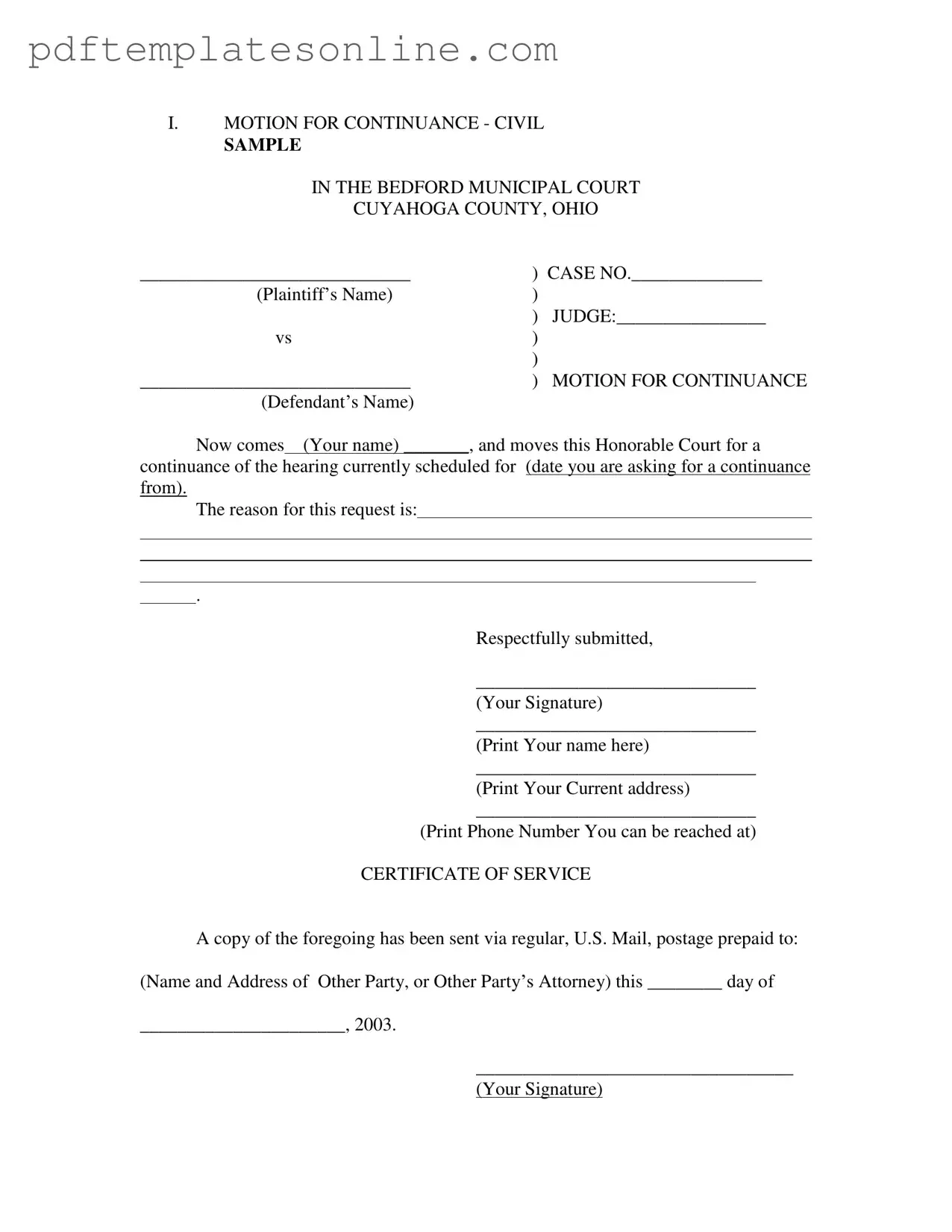Filling out the Motion For Continuance form can be a straightforward process, but there are several common mistakes that individuals often make. One significant error is failing to include the correct case number. This number is essential for the court to identify the specific case in question. Without it, the motion may be dismissed or delayed.
Another frequent mistake is neglecting to provide a clear and valid reason for the request. The court requires a legitimate justification for granting a continuance. Vague statements or insufficient explanations may lead to the motion being denied. It is important to articulate the reason clearly and concisely.
Many people also forget to sign the motion. A signature is necessary to validate the request. Submitting an unsigned document may result in the court rejecting the motion outright. Additionally, individuals should ensure that their name is printed clearly in the designated area to avoid any confusion.
Providing outdated contact information is another common oversight. It is crucial to include a current address and phone number where the individual can be reached. If the court needs to contact the individual regarding the motion, having accurate information is vital.
Some individuals mistakenly omit the Certificate of Service section. This part of the form confirms that the other party has been notified of the motion. Failing to include this can create complications and may hinder the progress of the case.
In addition, people often forget to send the motion to the correct party or their attorney. It is essential to ensure that the motion is served to the appropriate person to comply with court procedures. Missing this step can lead to delays in the hearing process.
Another mistake involves not adhering to the court’s filing deadlines. Each court has specific timelines for submitting motions. Failing to meet these deadlines may result in the motion being denied or not considered at all.
Finally, individuals may overlook the importance of reviewing the entire form before submission. Errors in spelling, grammar, or formatting can detract from the professionalism of the motion. A thorough review can help ensure that the motion is presented in the best possible light.
